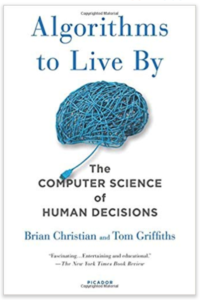 The other day, I came across an interesting, albeit hypothetical, auction scenario: Ten companies were bidding for the right to drill in a land tract. Each had done a geological survey of the land and privately assessed how much oil is in there. These surveys were known to be unreliable though. One company’s survey suggested that the tract is rich with oil. Another’s survey was inconclusive while the other eight suggested it was barren land. The tract was being sold in an open auction. Since they were all competitors, none of them would share their survey results with each other, and instead could only watch each other’s actions. When the auction began, the first company, with the promising report, made a high initial bid. The second company, encouraged by this bid to take an optimistic view of its own ambiguous survey, bid even higher. The third company had a weak survey but didn’t trust it in light of what they took to be two independent surveys that suggested it was a gold mine, so they made a high new bid. The fourth company, which also had a lackluster survey, was now even more strongly inclined to disregard it, as it seemed like three of their competitors all thought it was a winner. So they bid too. Pretty quickly, the consensus had become unglued from reality. An information cascade was formed.
The other day, I came across an interesting, albeit hypothetical, auction scenario: Ten companies were bidding for the right to drill in a land tract. Each had done a geological survey of the land and privately assessed how much oil is in there. These surveys were known to be unreliable though. One company’s survey suggested that the tract is rich with oil. Another’s survey was inconclusive while the other eight suggested it was barren land. The tract was being sold in an open auction. Since they were all competitors, none of them would share their survey results with each other, and instead could only watch each other’s actions. When the auction began, the first company, with the promising report, made a high initial bid. The second company, encouraged by this bid to take an optimistic view of its own ambiguous survey, bid even higher. The third company had a weak survey but didn’t trust it in light of what they took to be two independent surveys that suggested it was a gold mine, so they made a high new bid. The fourth company, which also had a lackluster survey, was now even more strongly inclined to disregard it, as it seemed like three of their competitors all thought it was a winner. So they bid too. Pretty quickly, the consensus had become unglued from reality. An information cascade was formed.
 That narrative came from the book Algorithms to Live By. Its authors went on to say this:
That narrative came from the book Algorithms to Live By. Its authors went on to say this:
Information cascades offer a rational theory not only of bubbles, but also of fads and herd behavior more generally. They offer an account of how it’s easily possible for any market to spike and collapse, even in the absence of irrationality, malevolence, or malfeasance.
This is how bubbles are formed in the stock market. Investors watch other investors’ actions and take cues from each other. They suspend their own judgments and assume that others know more.
We can also see the opposite scenario play out. Where investors sell an asset too cheaply just because others are doing it. And ignore their own assessment of what its value is – or maybe they never had their own value measure. They make their decisions based on others’ buying and selling.
Something like this unfolded this quarter in the stock market. Investors were tripping over each other in their race for the exits.
As a long-term patient investor, I don’t take cues from stock price movements. Instead, I focus on assessing quality of each business and its future earnings potential.
When I am considering a business to buy, I ask myself the following three questions:
- Is this a quality business? Does it have strong competitive advantages? I previously wrote about companies who dig an economic moat around their businesses.
- Is it run by capable management? I like to see shareholder friendly managers and prefer founder-run businesses.
- How much do I want to pay for the business?
Ultimately, the value of a business I am considering buying (or adding to) is based on what I expect my share of its earnings will be. Here, I mean total earnings – even undistributed earnings from a business and not just dividends or share buybacks.
We have found over time that the undistributed earnings of our investees, in aggregate, have been fully as beneficial to Berkshire as if they had been distributed to us.
Warren Buffett, Chairman Berkshire
Anchoring on a company’s intrinsic value — and not its price — can be a good thing. Especially when the market is in panic mode like it was this quarter. Consider this: The US stock market dropped by about 20% from its peak in less than a quarter. Did combined earnings from all public companies drop by that much? Or the expectations of future earnings? I don’t think so.
It’s the future earnings expectation that form the basis of a business’s value. For a good business, I am willing to pay $10 to $25 for every dollar of today’s earnings. In other words, I’d pay an earnings’ multiple of anywhere between 10x and 25x. Exactly where reasonable value falls within that range depends on my estimate for its long-term earnings growth potential. I use Discounted Cash Flow (DCF) analysis to come up with a number.
I am using the term earnings in a general sense. It’s really the profits earned by a business that belong to its shareholders. Depending on the type of business and the industry it operates in, those profits could best be represented by either regular GAAP earnings on its income statement — or it could be non-GAAP earnings, free-cash-flow, funds from operations, or distributable cash flow. Warren Buffet’s own favorite earnings measure is what he calls owner earnings.
Once I have formed an opinion on a business I am considering buying, I can then sit back and watch what other investors are doing. It’s like I know how much oil is in that land tract and how much I am willing to pay for it. If others bid its price too high, I do nothing. If they panic and bid too low, I step in and make a bid myself.
My estimates can and do change over time. I update what I think of a business and its future earnings potential as new information comes along, as I gain confidence in the management, or when I see their business landscape change.
I went into this quarter’s market swoon armed with value estimates of my favorite stocks. As prices drop all around, some of them fell below the levels where I’d consider them good bargains. This fourth quarter turned out to be an active buying season for me.
A tale of two stocks. I will write a full post on my 4Q purchases in January but here I want to highlight two businesses: IPG Photonics (IPGP) and Intuitive Surgical (ISRG). Both are excellent businesses, dominant in their industries and the managers are good stewards of shareholder capital. I own both in my portfolio for a few years and plan to keep them. Predictably, both stocks dropped in price quite significantly this quarter: IPG by 26% and Intuitive by about 18%. Conventional wisdom would be to buy both but remember I was anchored to my value estimates, not price levels. It turns out that Intuitive was still quite a bit expensive in my view even after its near-20% decline. At its low point, Intuitive was being offered at roughly 40 times its current annual earnings (even after adjusting for certain non-operational expenses). I believe in Intuitive’s long-term earnings potential, but I don’t foresee its growth to justify such a rich valuation. On the other hand, IPG Photonics was trading at only 13 times annual earnings at the low point. Even if I conservatively estimate its earnings growth of 5% over the next 10 years (and no growth afterwards), I could pay $13 for each $1 of profits today and still expect 11% return on my investment. This was a good bargain to be had. I ended up buying IPG Photonics shares but passed on Intuitive. Someday, the market will offer me a good bargain on Intuitive too. I will wait until then.
On occasions, I will make mistakes but hopefully they will mostly be where I walked away from buying a good business because I undervalued it. I can live with that risk. In investing, errors of omission are far less consequential than errors of commission.
Leave a Reply